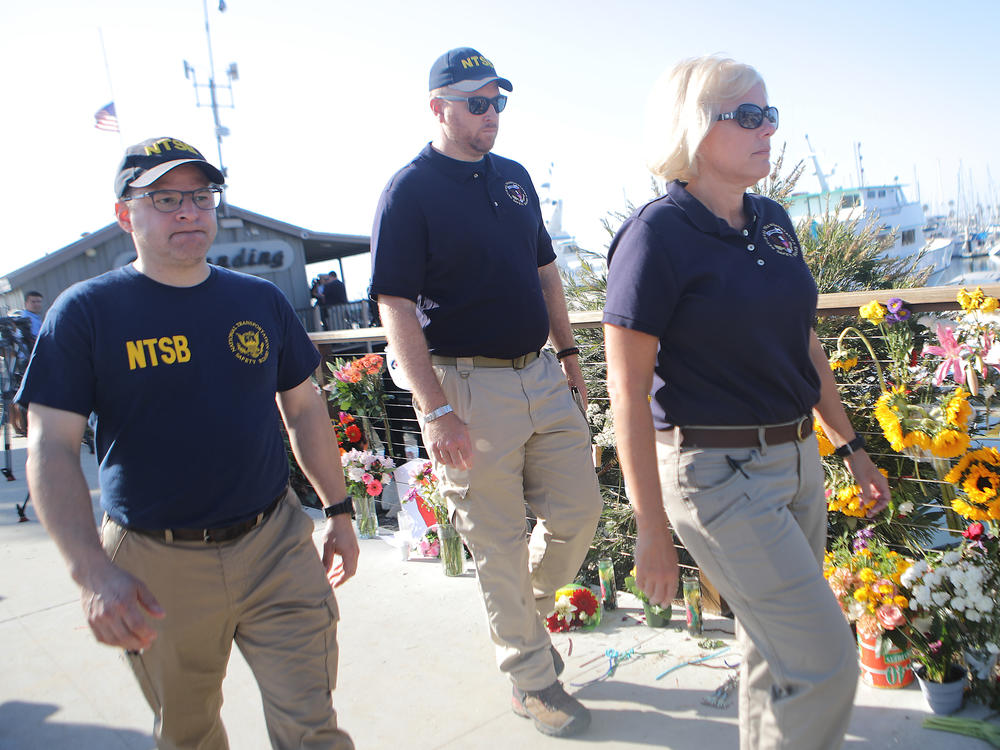Section Branding
Header Content
Safety Board Blames California Diving Boat's Owner For Fire That Killed 34
Primary Content
The National Transportation Safety Board has placed the blame for the dive boat fire that killed 34 people on the vessel's owners.
The five-member board ruled unanimously on Tuesday that it was a lack of oversight by the owners, Truth Aquatics Inc., that led to the 2019 fire — one of California's deadliest maritime disasters.
Investigators said that the burning and sinking of the Conception had made it impossible to pinpoint the exact cause of the fire. But they noted that the blaze started near the back of the deck in the boat's salon, where divers had plugged in smartphones and other devices containing lithium-ion batteries.
A sister vessel of the Conception, the Vision, had earlier experienced a fire caused by cellphone chargers, The Washington Post reports – but that fire was detected early and quickly put out.
After the Conception fire, the Coast Guard issued a safety bulletin that urged crews to "reduce potential fire hazards and consider limiting the unsupervised charging of lithium-ion batteries and extensive use of power strips and extension cords."
And one Coast Guard safety requirement was fatally overlooked, investigators said: a night watchman.
Five crew members were asleep in the upper deck that night. When a crewmember awakened and noticed a glow coming from the main deck, the crew made efforts to get to the bunkroom where the passengers and one crew member were staying, but they found their way blocked by fire.
Because there was no watchman, investigators said, by the time the fire was detected it was too big for the crew to handle – leading directly to the large casualty numbers.
Investigators found that some of the passengers were wearing shoes when they died – suggesting that they were awake and trying to escape the fire. The coroner listed smoke inhalation as the cause of death for all who died.
The bunkroom's escape hatch was also too hard for passengers to use as a means of escape, investigators said: while it met regulations, it was still inadequate.
"I hate the term accident in this case because, in my opinion, it is not an accident if you fail to operate your company safely," board member Jennifer Homendy said, according to The Associated Press.
The NTSB does not have enforcement powers. Instead, it can make recommendations for safety measures to bodies like the Coast Guard or the Federal Aviation Administration, which have not always accepted the board's suggestions.
Court documents indicate separate charges are imminent against the boat's captain, the AP reports, and other court filings show the company and its owners have offered to settle lawsuits with victims' relatives.
Copyright 2020 NPR. To see more, visit https://www.npr.org.

